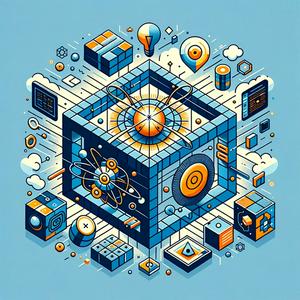This is your Quantum Computing 101 podcast.This is Leo, your Learning Enhanced Operator, and as I step into the quantum circuit of today’s news, I can’t help but feel the static in the air—a palpable charge, like particles just before entanglement. Right now, we’re living through a moment that, in hindsight, will feel pivotal to the story of quantum technology: the successful integration of **quantum-classical hybrid solutions** that don’t just promise the future—they deliver results.Let’s cut straight into the superposition: On September 25th, HSBC and IBM announced a breakthrough, the world’s first evidence that a hybrid quantum-classical approach could shake up global finance. In an experiment with IBM’s Heron quantum processors and HSBC’s real bond trading data, their hybrid algorithms achieved up to a **34% improvement** in predicting which bond trades would actually go through, outstripping the sharpest classical methods. This wasn’t theory; it was production data, processed using both classical and quantum resources in tandem. Imagine: the probabilistic magic of qubits, collaborating with the deterministic power of classical CPUs to solve financial puzzles once confined to the realm of “unsolved”—all achieved *today*.What does a quantum-classical hybrid actually look like in practice? Picture an algorithm where parts of a complex problem—say, the fuzzy, combinatorial labyrinth of bond trading—are sampled and optimized by a quantum computer. Quantum’s power: exploring vast solution spaces, seeing the “many worlds” at once. Meanwhile, the classical computer acts as orchestrator, crunching deterministic elements, handling error correction, and integrating quantum outputs back into real-world applications. The quantum processor becomes the artist, painting outside the lines; the classical computer, the precise architect.This hybrid paradigm is catching on. At the Quantum World Congress this week, EPB Quantum announced a partnership with Oak Ridge National Lab and NVIDIA to supercharge hybrid computational resources, blending quantum devices with the world’s most powerful classical supercomputers—all under one roof in Chattanooga. The result? New architectures where future CPUs, GPUs, and QPUs collaborate, accelerating not just finance, but modeling, optimization, and even large-scale simulations in aerospace and material science.In the trading pits of London, the labs of MIT and Harvard, and the quantum cores spinning quietly inside industrial machines, I see the same pattern: the quantum-classical hybrid isn’t a fusion; it’s a dialogue—a type of negotiation that mirrors, in code and hardware, how societies negotiate change. Just as in today’s markets, sometimes it takes a new kind of partnership—a hybrid—to leap past old limits.So whether you’re modeling a molecule, orchestrating an energy grid, or predicting the shape of tomorrow’s markets, remember: the most powerful computation today is not quantum or classical, but **quantum and classical, working as one**.Thanks for listening. If you have questions or quantum quandaries you want explored, send an email to
[email protected]. Subscribe to Quantum Computing 101 for your weekly shot of quantum clarity, and remember, this has been a Quiet Please Production. For more info, visit quietplease.ai.For more http://www.quietplease.aiGet the best deals https://amzn.to/3ODvOtaThis content was created in partnership and with the help of Artificial Intelligence AI


